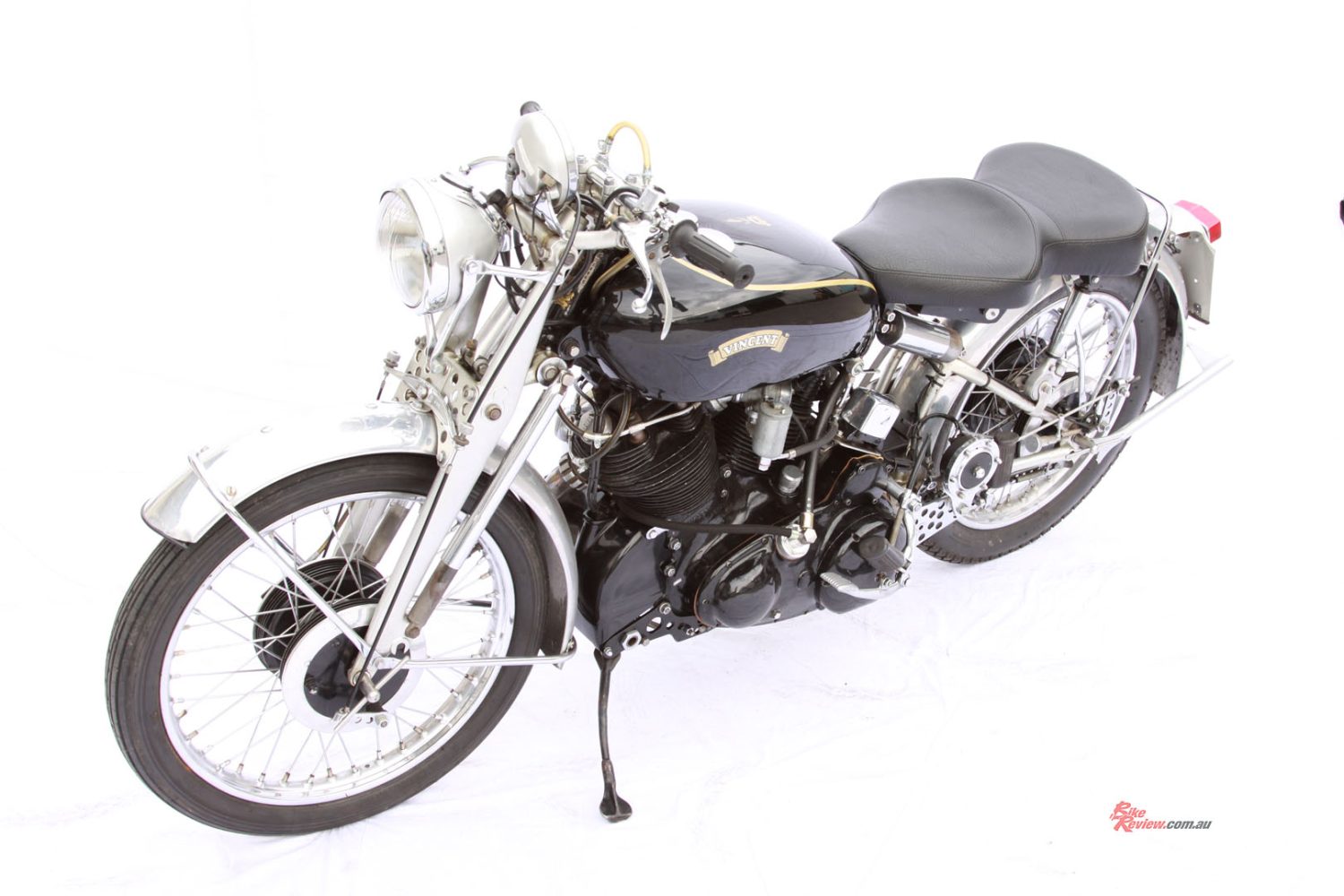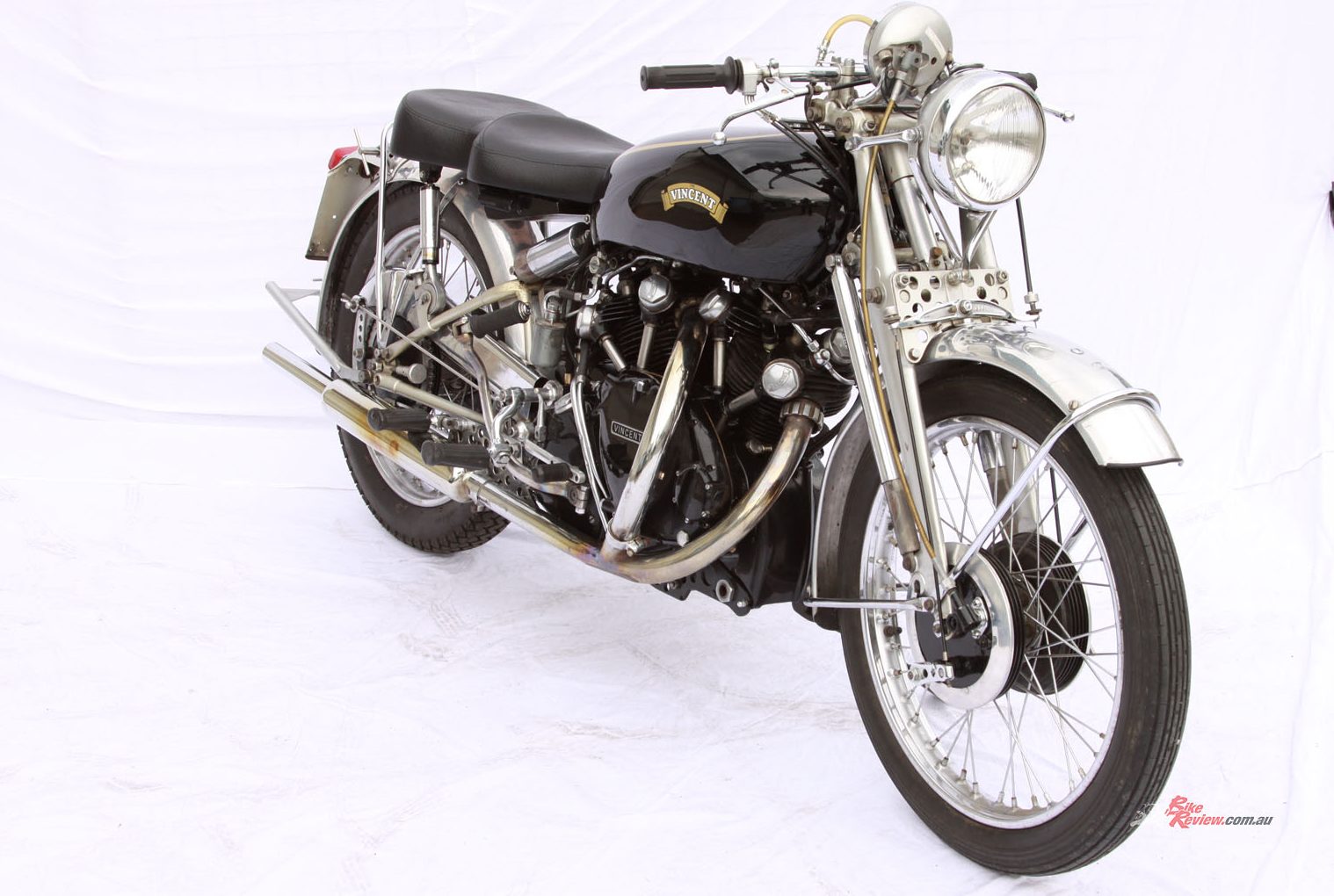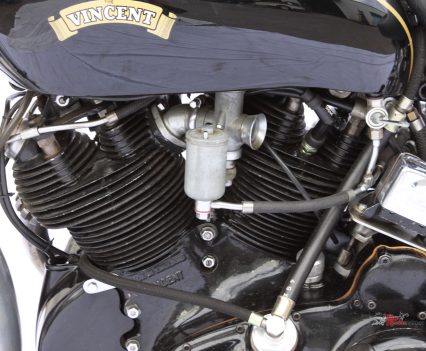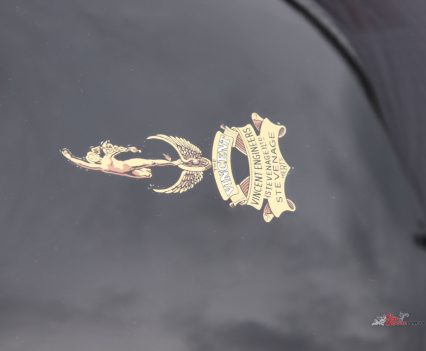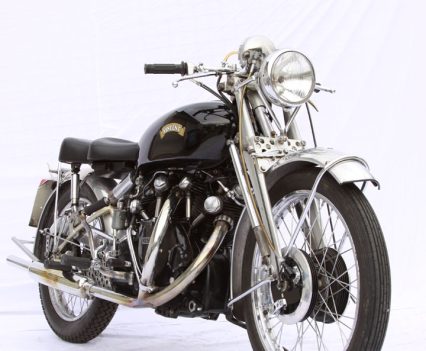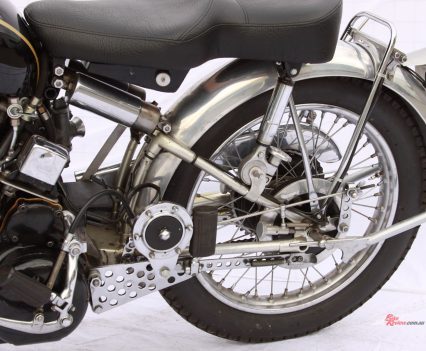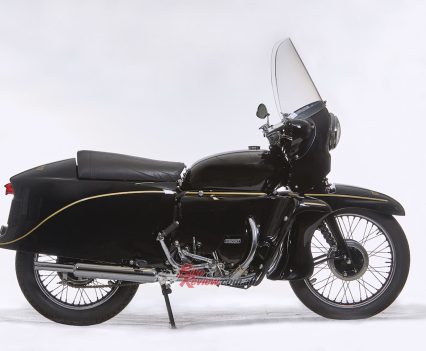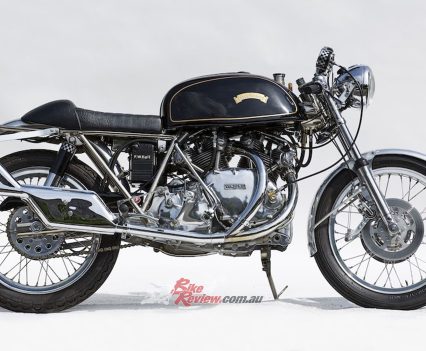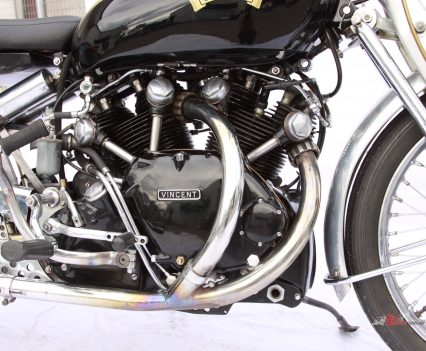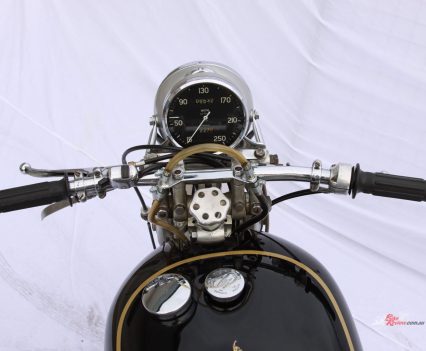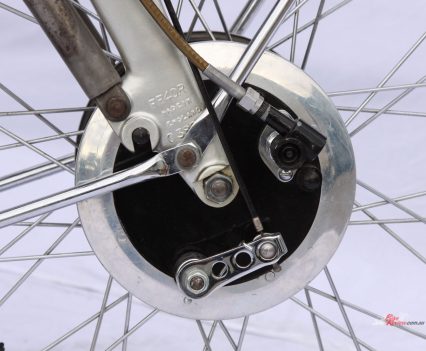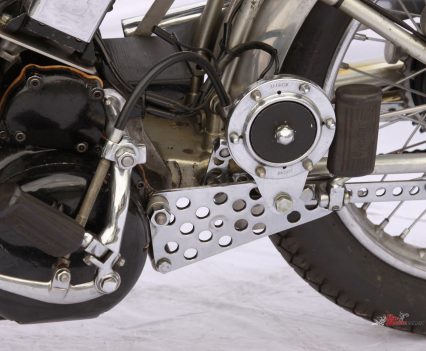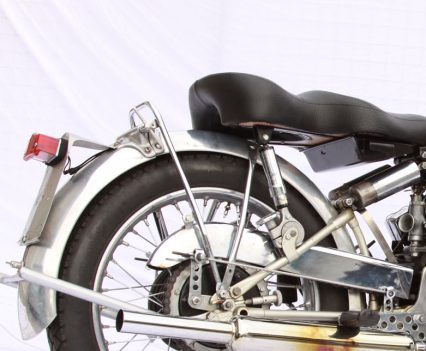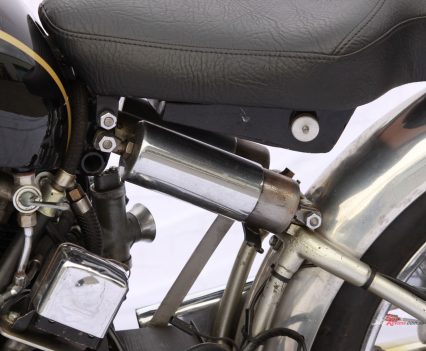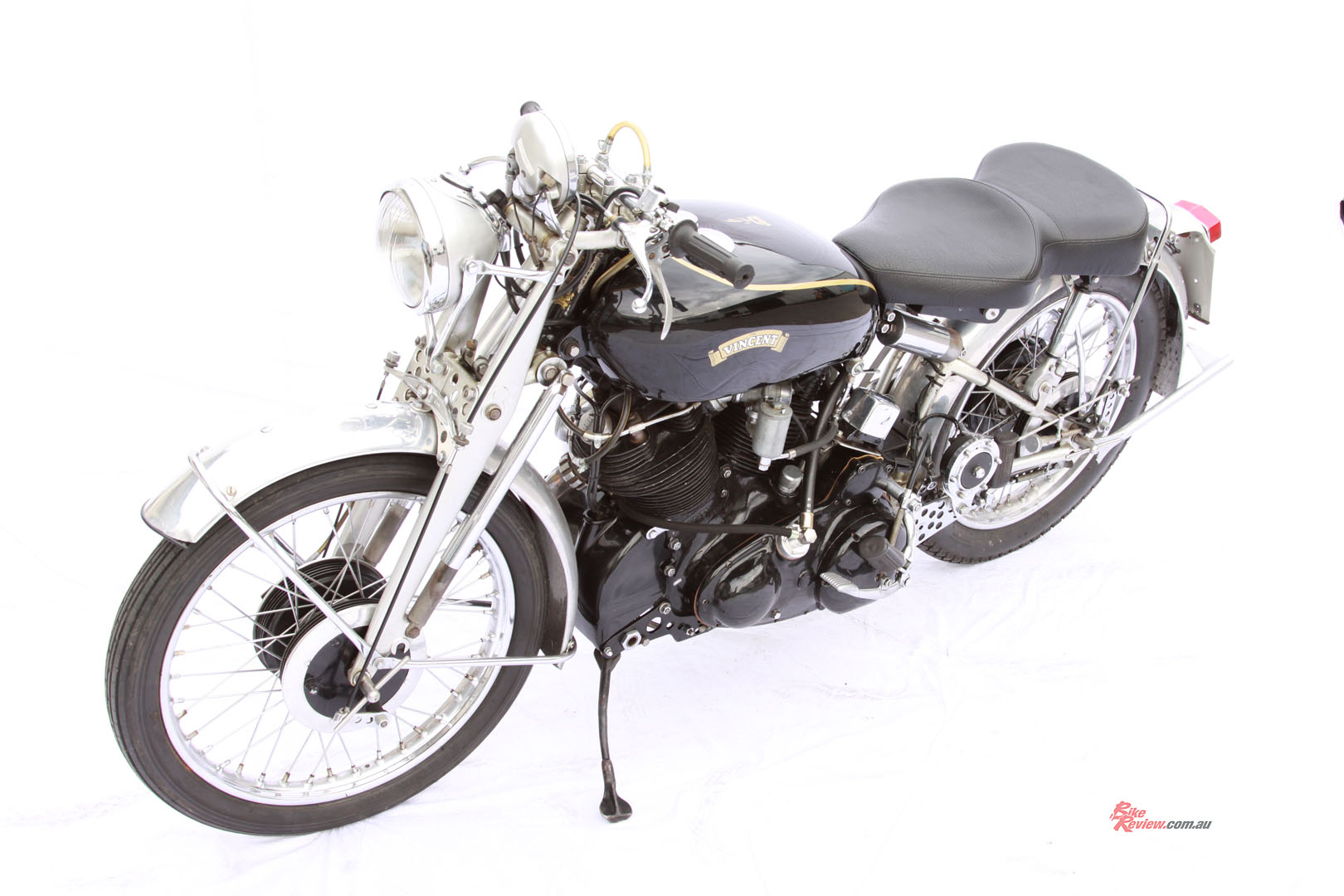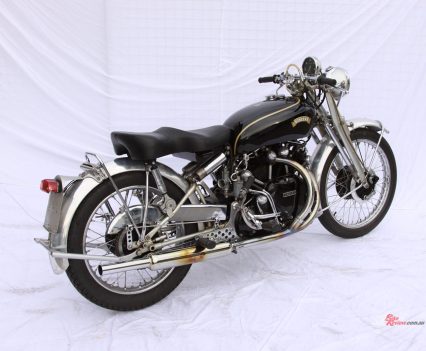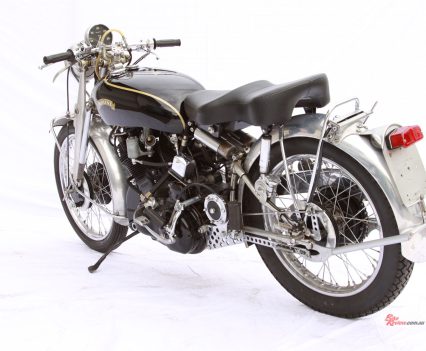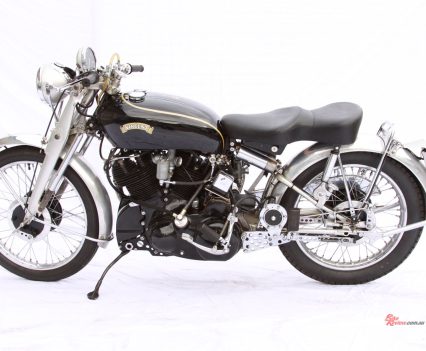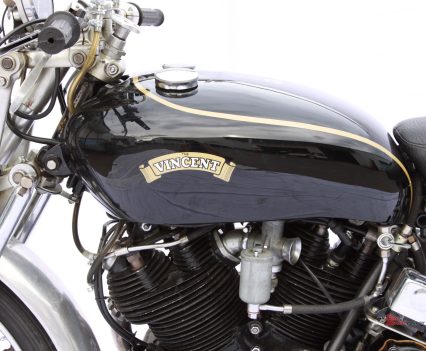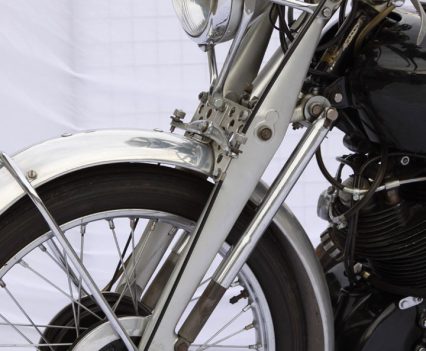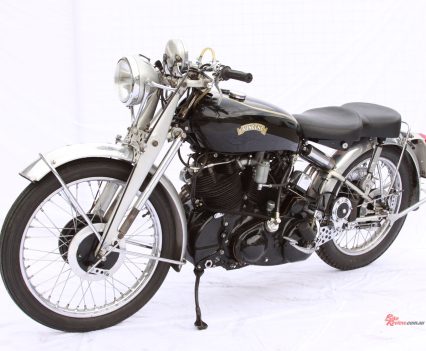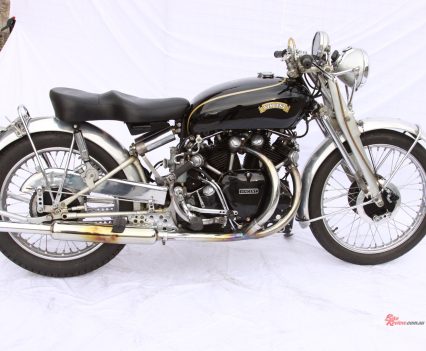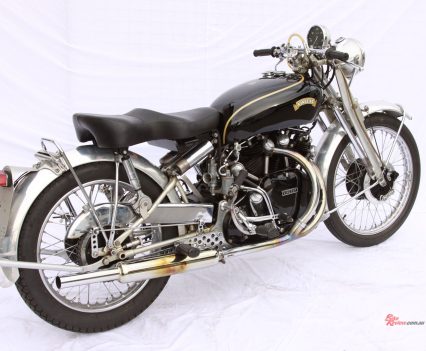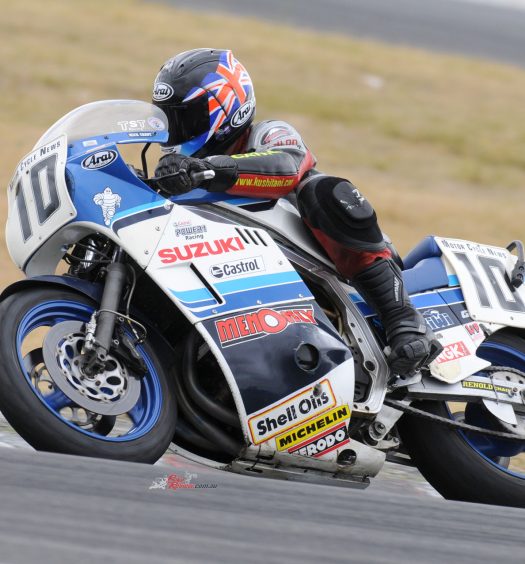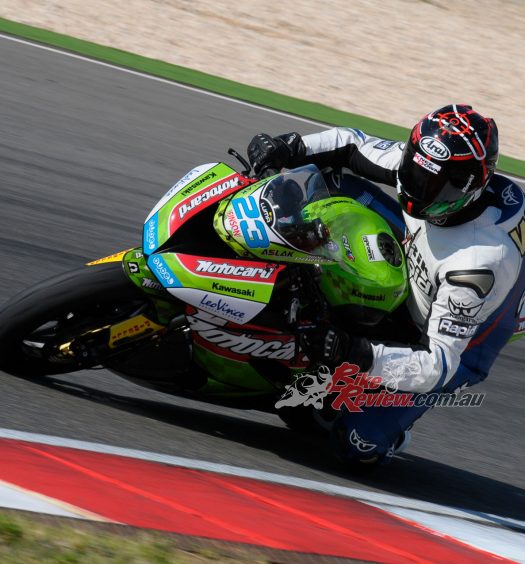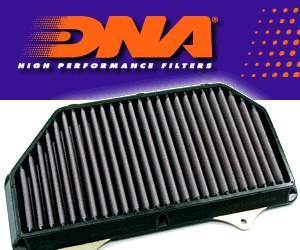Vincent’s Black Shadow is arguably the most renowned motorcycle to have ever existed – setting records and creating the concept of the superbike... Photos: Tony Wilding
The history of Vincent Motorcycles is a rocky affair, with spectacular highs, matched only by the unfortunate low that saw production end. With less than 1700 Black Shadows ever made, finding one in this condition is an impossible task…
Vincent was created when Phil Vincent purchased HRD Motors in 1928 as the means of entering the motorcycle production industry with an established name, becoming Vincent HRD Co. Ltd with production to take place at Stevenage in Hertfordshire, England.
Check out our other vintage bike features here…
The first Vincent HRD offering was a single-cylinder powered motorcycle combining a Vincent cantilever frame with a JAP motor. Facing unreliability, by 1934 the decision was made by Phil Vincent with Phil Irving on board that they would need to produce their own engines. This led to the creation of the Meteor, a 500cc single featuring a forked rocker pressed into a shouldered valve stem to combat lateral vibration, increasing valve life and performance.
This was followed by the Series A Rapide, a 47.5° V-twin producing 45hp and featuring cantilever suspension, girder forks and capable of 110mph, that sought after ‘ton’.
During World War II Vincent produced munitions to support the war effort, despite some use of Vincent engines in various war roles. Following the war, with supply to America a major concern and facing the risk of being mistaken for Harley-Davidson the Vincent HRD name became just Vincent.
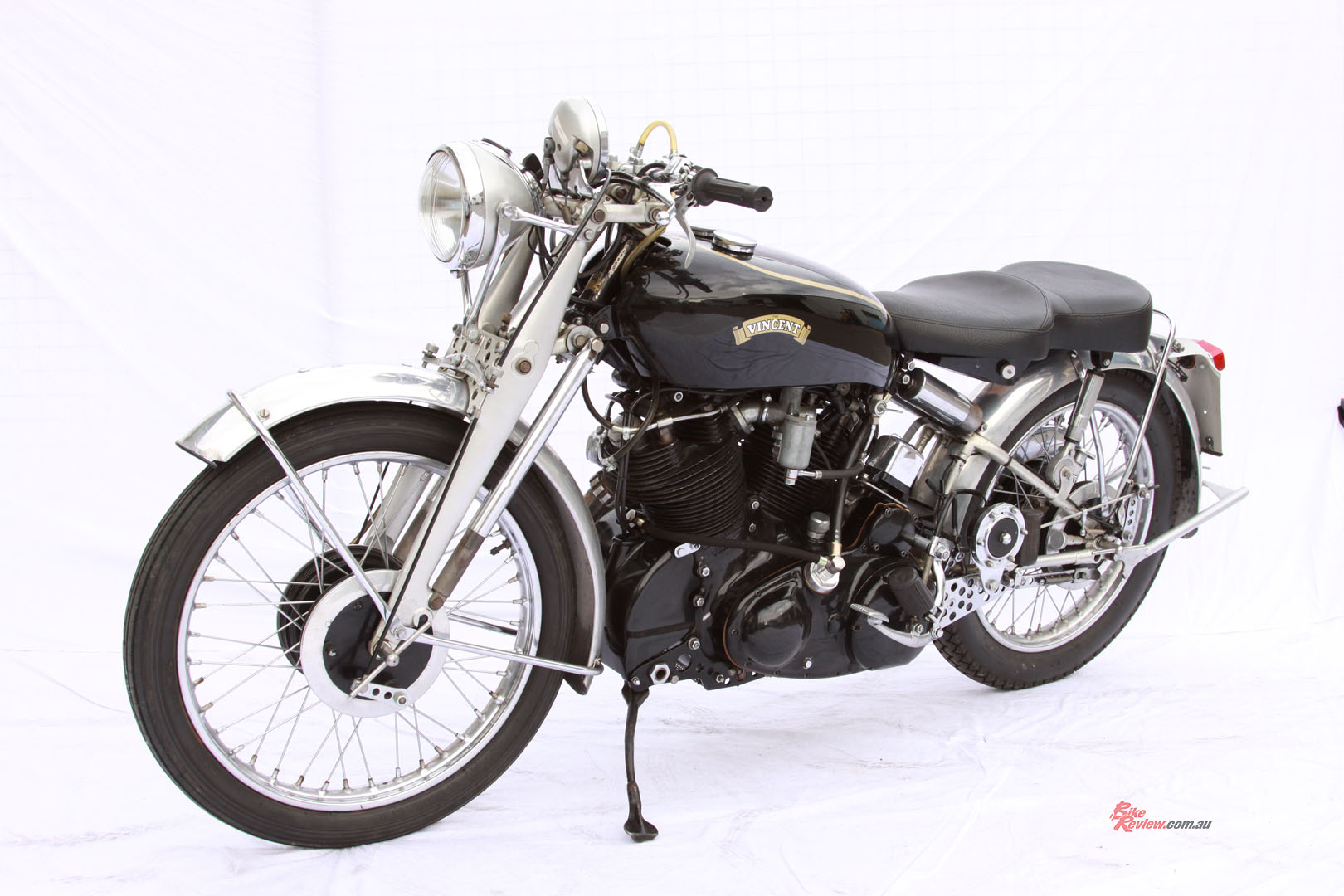
The Vincent Black Shadow, or ‘Series C’ was the next step in the evolution of the Rapide, following the Series B which had introduced internal oil pipes, a gearbox integrated into the engine, revised cylinder angles.
The Vincent Black Shadow, or ‘Series C’ was the next step in the evolution of the Rapide, following the Series B which had introduced internal oil pipes, a gearbox integrated into the engine, revised cylinder angles, the use of the engine as a stressed member of the frame (a concept decades ahead of its time) and dual brakes on both the front and rear end.
The Black Shadow benefited from ‘Girdraulic’ forks, combining girder forks with hydraulic damping – hence the bike’s unusual front-end. Power was also up with up to 55hp and a top speed of 125mph (just over 200km/h) set a new record, not to mention a new standard for motorcycle manufacturers.
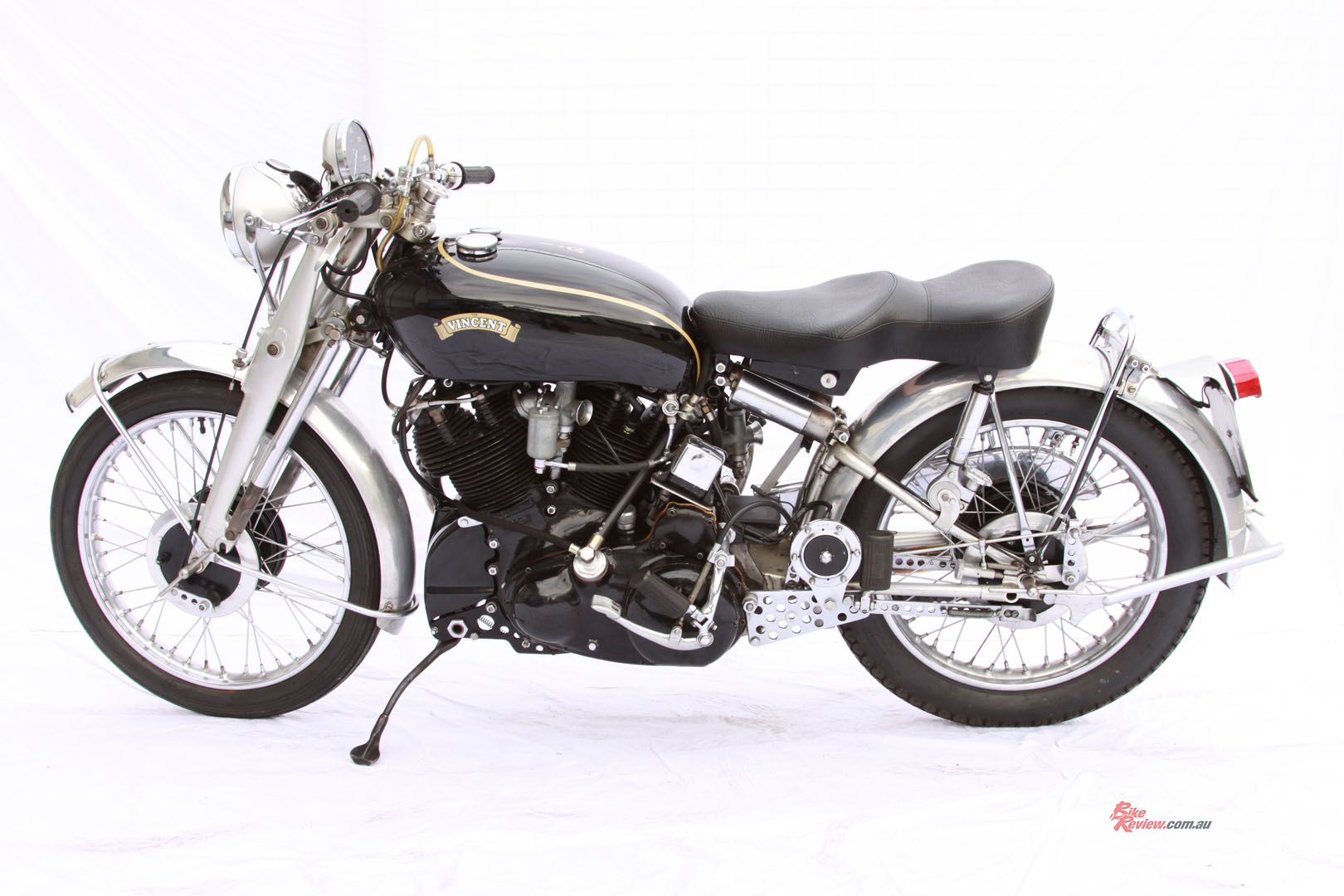
With a top speed of over 200km/h, the Black Shadow raised the bar of motorcycle performance for decades to come.
The Vincent Black Lightning was an even more extreme proposition – as the racing version of the Black Shadow. This stripped-down version made use of aluminium components and weighed a massive 38kg less than the Shadow’s 208kg weight. The Lightning also had a single seat and rearset footrests and was good for 70hp. One a few years ago for AUD $925,000, the ex-Tony McAlpine bike, which is now back here in Australia.
By 1954 the outlook was grim as the expensive hand-built Vincent motorcycles were struggling, as motorcycle sales fell generally with cheaper four wheeled options available. Faired versions of the Vincent offerings known as the Victor, Black Knight and Black Prince failed to revive sales and by 1955 Vincent announced production would stop.
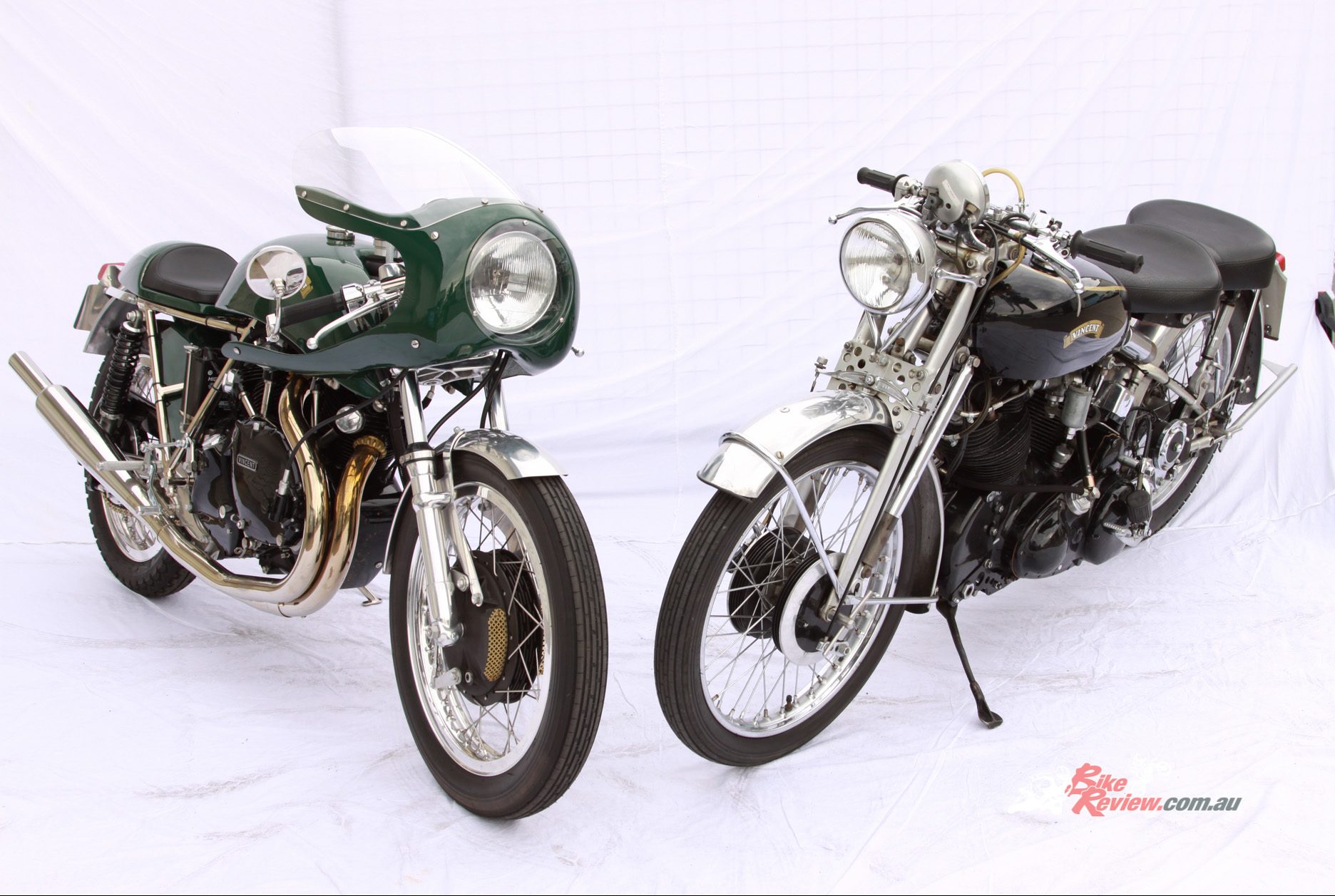
The Egli Vincent was powered by a modified Black Shadow engine, making the already quick bike even faster.
Since that time Vincent engines have been used in various guises, including in café racers – often in conjunction with a Norton featherbed frame and also notably by Fritz Egli who produced around 100 Egli-Vincents. In 1994 Bernard Li purchased the Vincent trademarks with plans to relaunch the brand in an updated, revised form. Bernard Li died in 2008 in a motorcycle accident while touring with friends, ending the dream of a revitalised Vincent motorcycle.
Check out our feature on the Egil Vincent here…
THE BLACK SHADOW TODAY
As a testament to the quality and exclusivity of the original Vincent Black Shadow they remain to this day in high demand among collectors and bike enthusiasts. In fact, over the entire period of production less than 1,700 Vincent Black Shadows were ever made, with their iconic black colour scheme, including crankcases and covers at a time when chrome was the norm.
Assembled entirely by hand, these motorcycles continue to represent the spirit in which they were made – high quality, high performance, innovation and with an attention to detail that even by today’s standards is commendable.
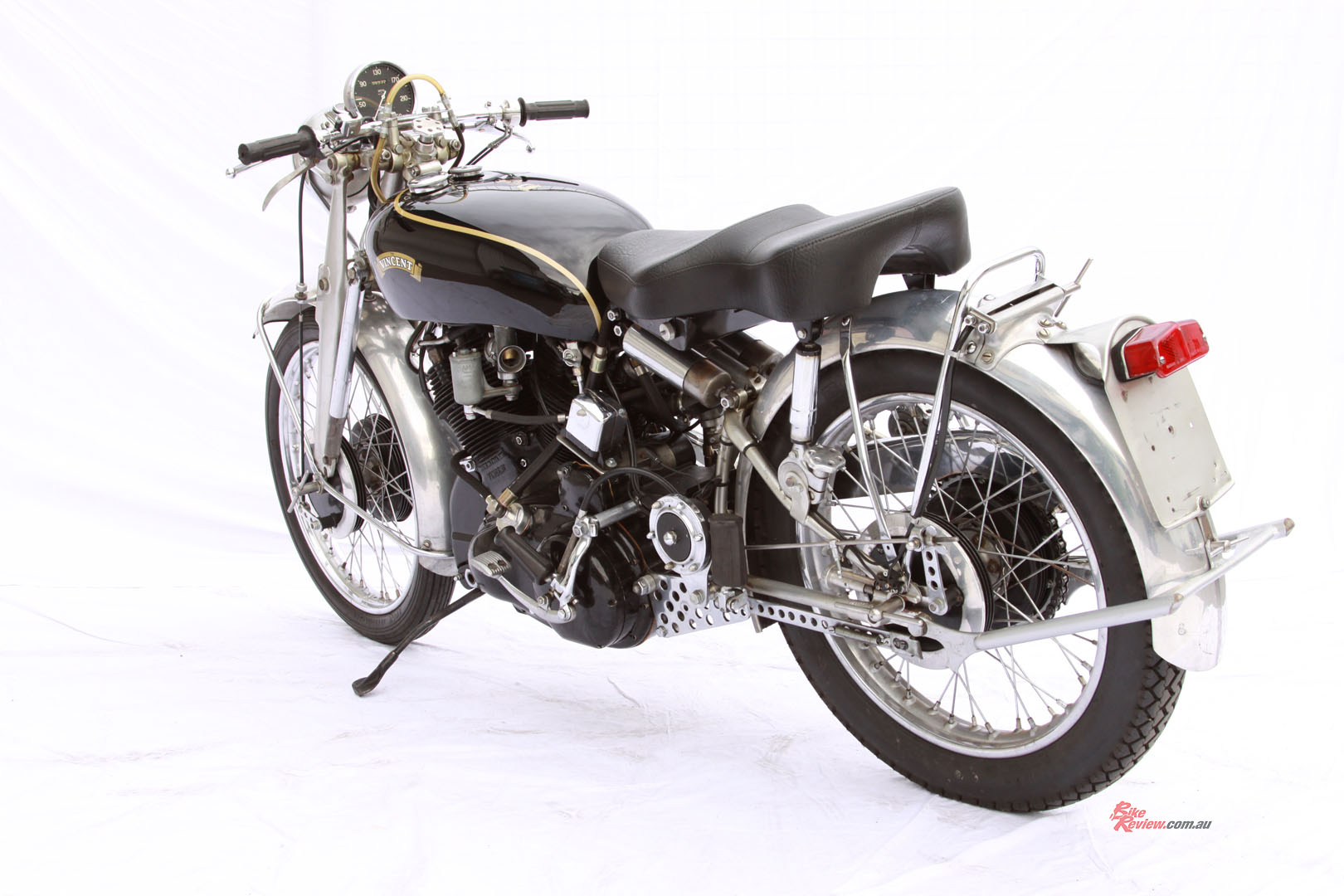
This bike was actually originally owned by Fritz Egli as his personal transport. It now resides in Sydney.
Technical features that were and remain to this day noteworthy include – the narrow 50° V-twin engine, with aluminium pistons, forged connecting rods, dual Amal carbs, dry sump oiling system, using the engine as a stressed member, dual rear sprockets, four drum brakes – two on each wheel and adjustable shift lever.
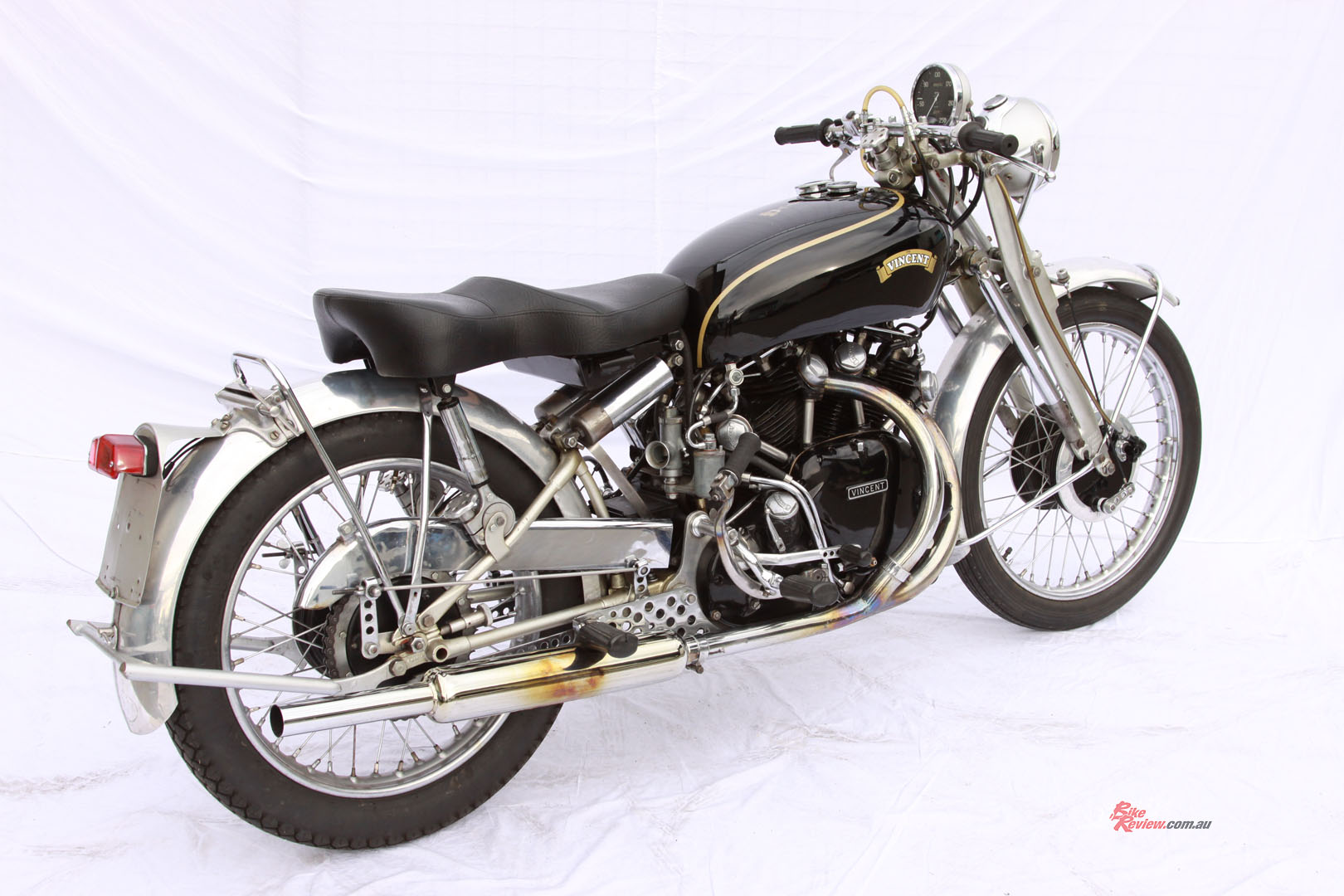
The Black Shadow we photographed has been immaculately cared for, who knows how many of the 1700 made are actually still around!
THE US SPEED RECORD
The Black Shadow’s demolishment of the speed records of its time almost seems like an occurrence engineered by fate itself when you consider the circumstances. John Edgar, a wealthy motorcyclist, sought the fastest motorcycle in America and met Phil Vincent in California, where Phil was able to convince him that the Black Shadow would be capable of breaking the 136.183mph (219.165km/h) record held by a Harley-Davidson.
Phil Irving was tasked with modifying a Black Shadow for the task. The bike received higher compression for the fuel to be used, ground cams, widened side mounted carbs, a new clutch and modified, ported and polished cylinder-heads. Rider Rollie Free then took the bike and made his own changes, further reducing the weight and drag as much as possible and was able to achieve a speed of 148.6mph (239.15km/h) to easily beat the 11-year-old record.
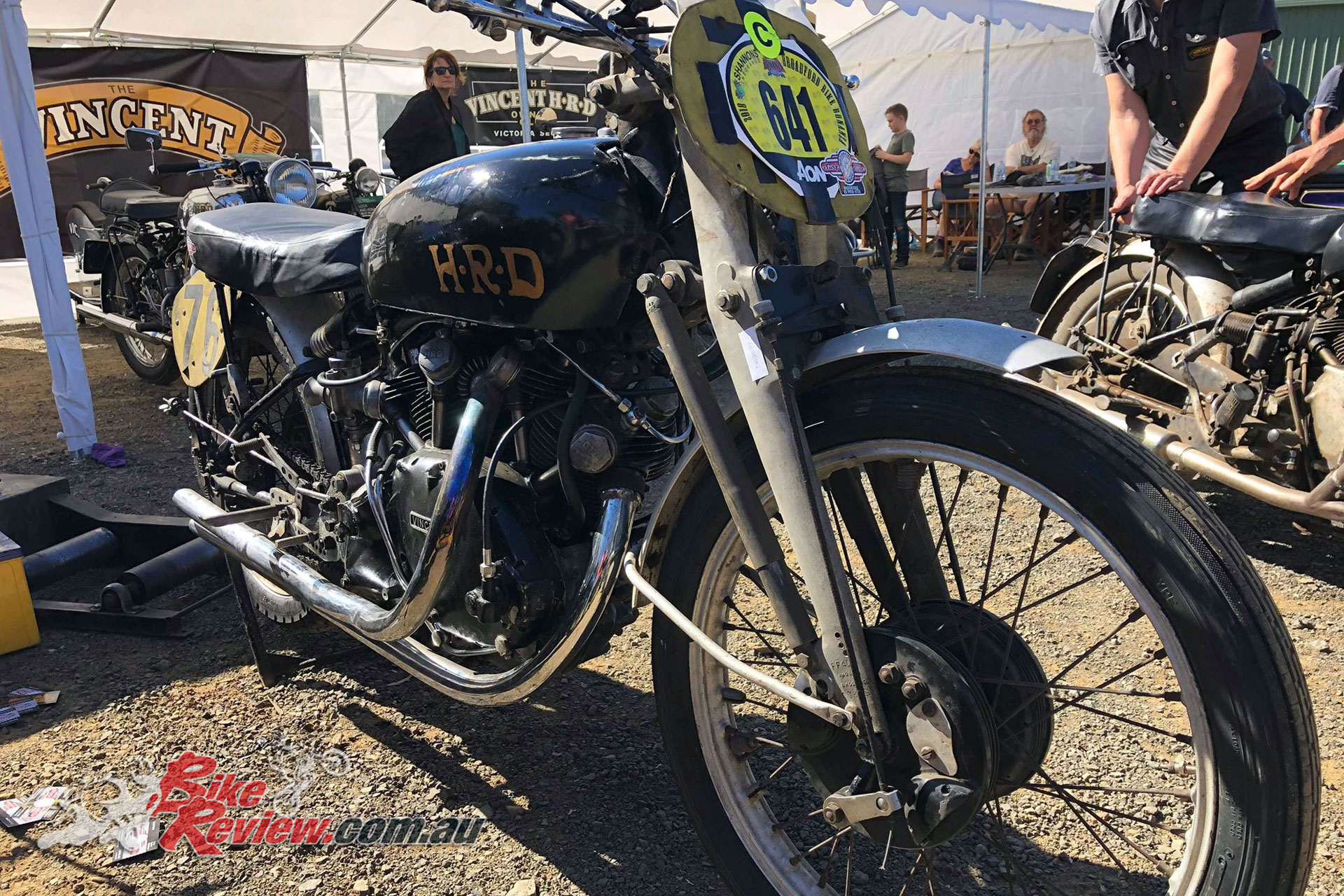
This stripped down Black Shadow became known as the Black Lightning and was available from the factory, although only 31 were ever made.
He then stripped down to a swimming costume, bathing cap and sneakers for another attempt, in which he set the record at 150.313mph (241.9km/h). Rollie Free returned later on the Vincent and set the record at 156.58mph (251.991km/h) but also crashed.
Vincent Black Shadow Specifications
ENGINE: 998cc, air-cooled, four-stroke, 50° V-twin, OHV, dual 1.125in type 29 Amals, 7.3:1 Compression Ratio, four speed gearbox.
CHASSIS: Brazed lug duplex tubular cradle, Vincent Girdraulic forks, 76mm wheel travel at the front, cantilever springing rear end. Dual front and rear drum brakes.
PERFORMANCE: 41kW@5500rpm, 207kg dry, no fuel, 201.2km/h top speed (stock).


